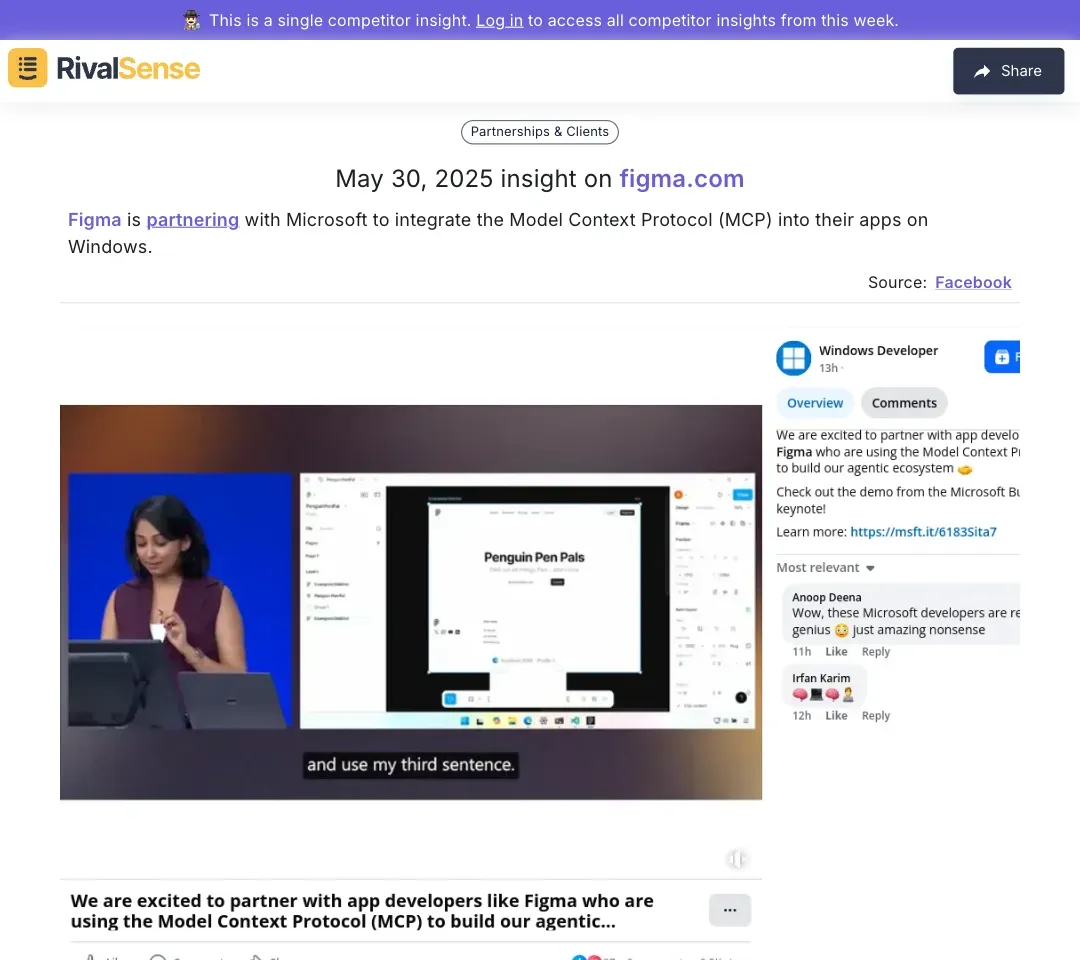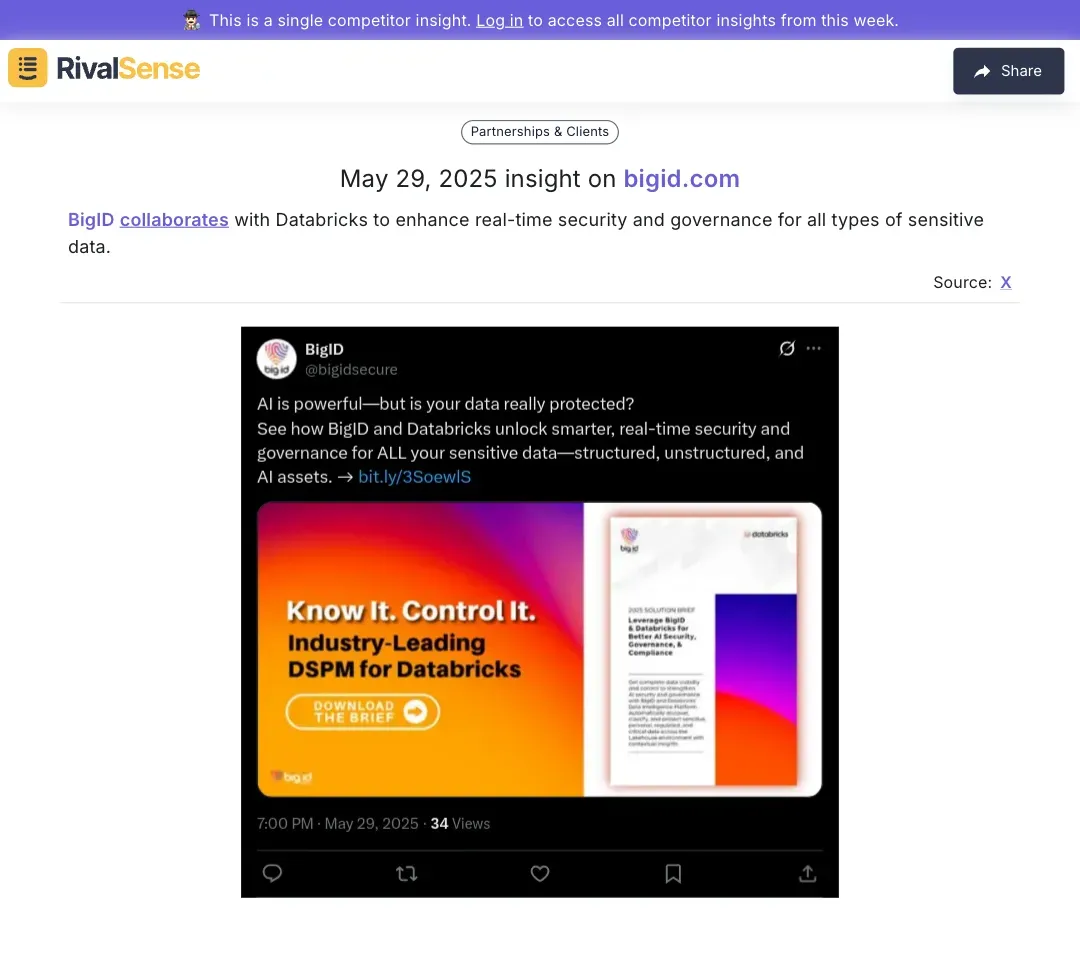Data-Driven Insights on Competitor Partnerships & Client Strategies
In today's competitive landscape, forming strategic partnerships is not just an option—it's a necessity for businesses aiming to stay ahead. Competitor partnerships, when executed thoughtfully, offer unique advantages by combining strengths to tackle market challenges together. These alliances expand market reach, access new customer segments, and enhance product offerings through complementary technologies.
Understanding their strategic importance is crucial—they fill capability gaps, reduce costs through shared resources, and foster innovation. The key lies in leveraging data-driven insights to identify partners with aligned goals and evaluate mutual benefits. Practical steps include:
✅ Market Analysis: Use data to identify offering gaps and compatible partners
✅ Competitor Benchmarking: Analyze competitors' partnerships for proven strategies
✅ Alignment Check: Ensure shared business values and customer focus
✅ Risk Assessment: Quantify potential downsides and upsides
✅ Performance Metrics: Establish clear KPIs to measure success
Leveraging Technology Integrations
Integrating complementary technologies is essential for enhancing user experience and maintaining competitive edge. Seamless tool integration creates cohesive solutions that boost efficiency and customer satisfaction—like combining CRM with marketing automation for streamlined lead management.
Technology partnerships drive innovation and product differentiation. Collaborations unlock new features, expand capabilities, and open untapped markets. Consider Figma's partnership with Microsoft to integrate Model Context Protocol (MCP) into Windows apps:

Tracking such integrations reveals how competitors enhance product ecosystems—helping you identify tech trends and partnership opportunities to strengthen your own offerings.
Actionable steps:
- Identify capability gaps in your current product
- Research partners with complementary technologies
- Test integrations before full deployment
- Gather user feedback for refinement
- Market new features to highlight added value
Enhancing Security and Governance Through Collaboration
Security and governance are critical in modern partnerships, especially for navigating complex regulations. Collaborations enable businesses to pool resources for robust compliance frameworks and advanced threat mitigation strategies.
Joint security audits and aligned protocols significantly reduce vulnerabilities. For example, BigID's collaboration with Databricks enhances real-time security for sensitive data:

Monitoring such alliances provides insights into evolving security standards—helping you anticipate regulatory shifts and strengthen your governance posture.
Effective collaboration checklist:
- 🔒 Define mutual security objectives
- 📝 Conduct quarterly compliance reviews
- 👥 Implement joint training programs
- 🛡️ Obtain third-party security certifications
Redefining Industry Standards with Combined Expertise
Fusing innovation with regulatory expertise accelerates industry transformation. Partnerships that blend specialized knowledge create new benchmarks—like tech-regulatory collaborations that launch compliance-friendly innovations.
RingCentral and Vodafone Business exemplify this, combining AI innovation with regulatory expertise to redefine CPaaS deployment:

Observing such alliances teaches how to balance innovation with compliance—enabling you to set category-defining standards.
Execution blueprint:
- Identify Complementary Strengths: Partner to fill capability gaps
- Align on Vision: Ensure shared strategic objectives
- Leverage Data: Tailor solutions to regulatory/customer needs
Data-Driven Decision Making in Partnership Strategies
Competitive intelligence transforms partnership decisions from guesses to strategic moves. Analyzing competitors' alliances reveals gaps where your solutions could complement theirs—like spotting SaaS partnerships that increased adoption rates.
Tools like RivalSense track competitor collaborations in real-time, providing actionable insights into their strategies. Best practices:
📊 Negotiation Leverage: Use data to highlight unique value propositions
🤝 Structured Agreements: Draft terms with quantifiable mutual benefits
🔍 Continuous Monitoring: Track KPIs post-launch and adjust strategies
Partner evaluation checklist:
- Market position alignment
- Customer feedback patterns
- Strategic goal compatibility
Conclusion: The Future of Competitor Partnerships
Competitor partnerships are evolving into dynamic, data-driven collaborations—with trends like "co-opetition" (competing while collaborating) demanding strategic agility. AI-powered competitor analysis now identifies opportunities others miss, turning threats into synergies.
Proactive steps for success:
- ⏰ Set automated alerts for competitor moves
- 📈 Review partnership KPIs monthly
- 🌐 Explore cross-industry collaboration potentials
Ready to transform your strategy?
👉 Try RivalSense for Free and get your first competitor report today. Track product launches, pricing changes, partnerships, and regulatory shifts—all delivered in actionable weekly insights.
📚 Read more
👉 How Linear's AI Scheduling Spurred Competitor Innovation
👉 Unlock Competitor Secrets: A Founder's Guide to LinkedIn Benchmarking
👉 Unlocking Competitive Edge: Analyzing Competitor Partnerships & Client Wins
👉 4 AI-Driven Strategies for Competitive Intelligence in Healthcare
👉 AKASA vs. Competitors: AI in Healthcare Revenue Cycle Analysis
